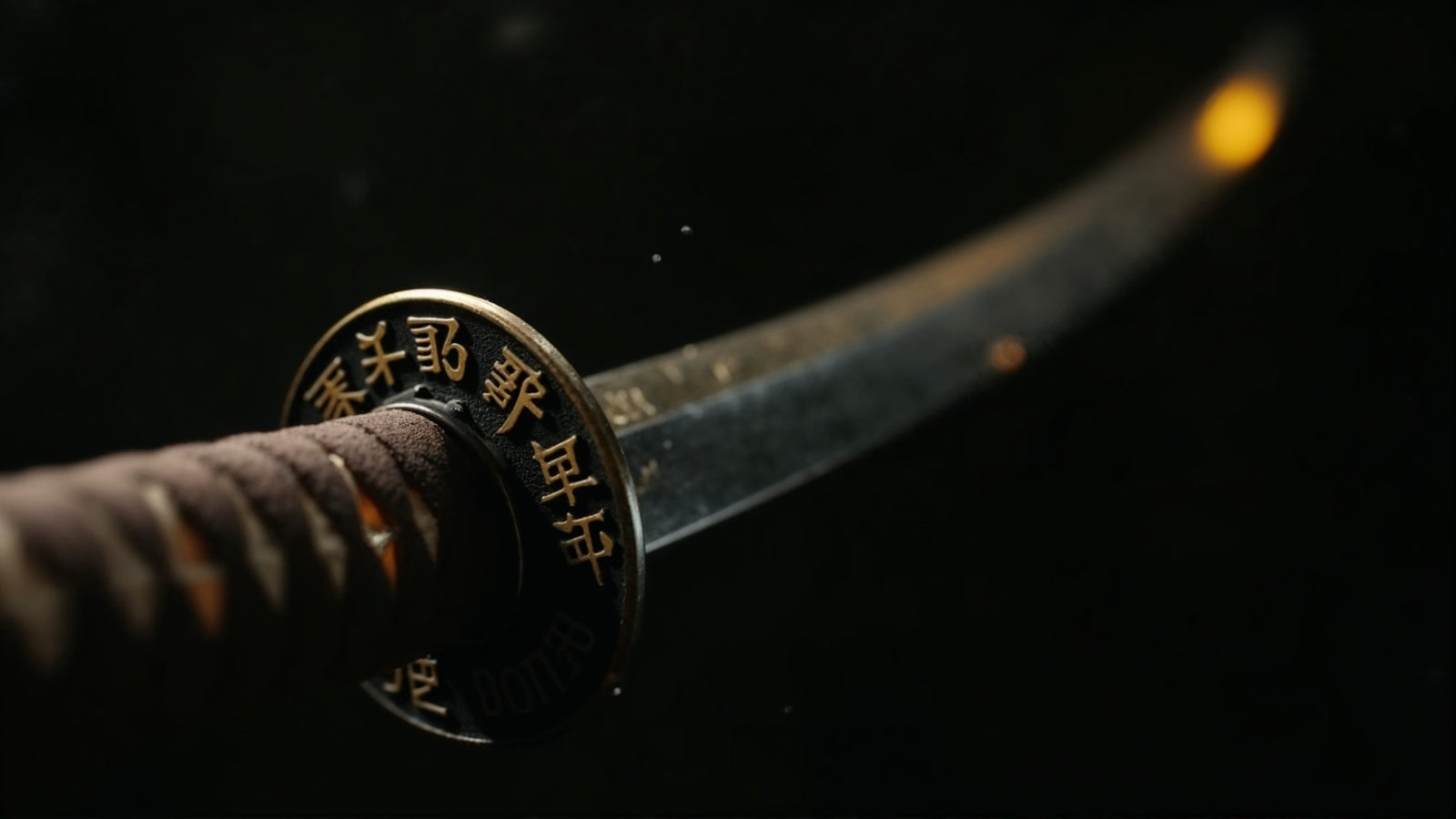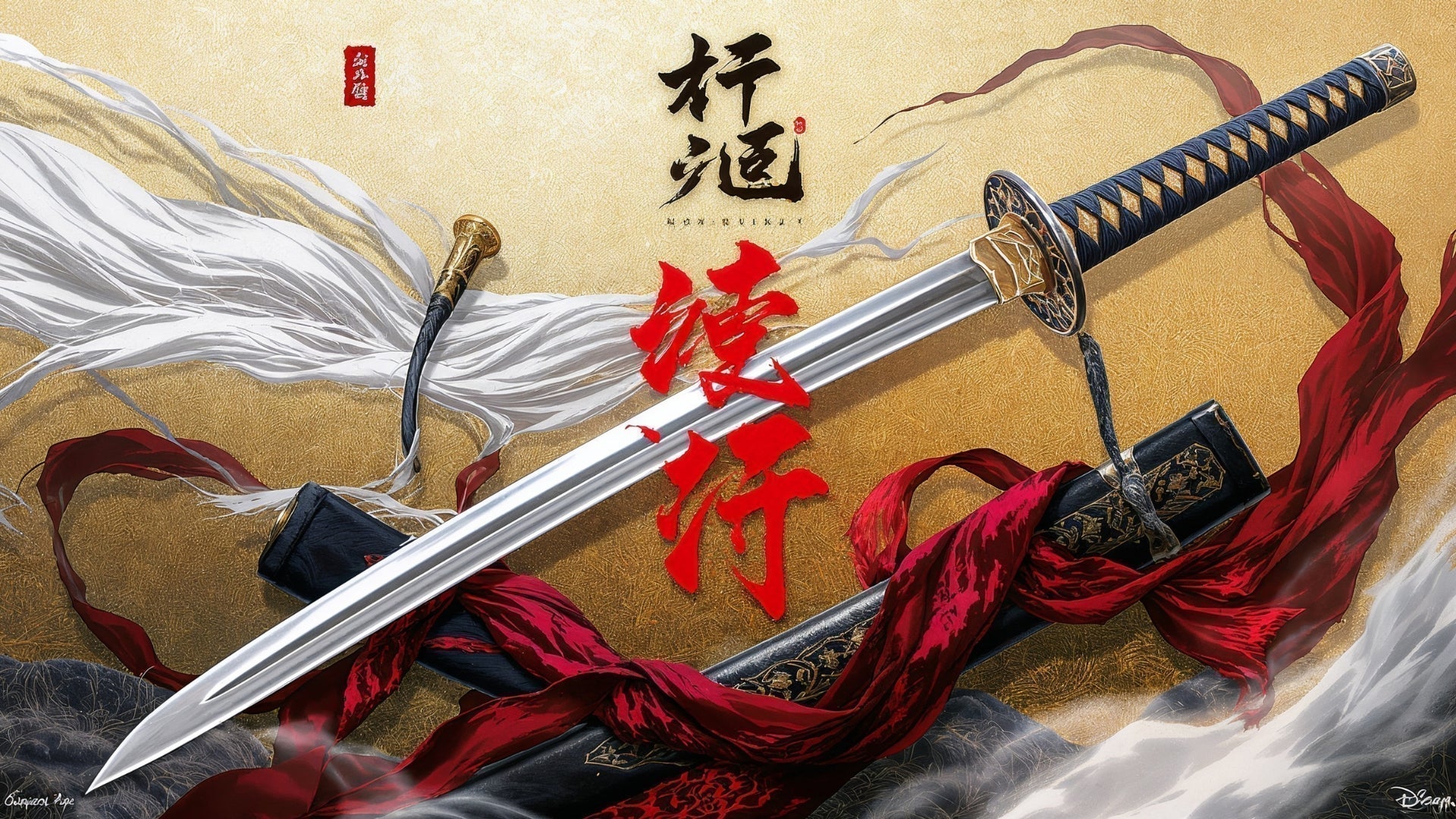From ancient warrior codes to Tarantino’s cinematic universe, the Hattori Hanzo sword stands as the ultimate symbol of honor, vengeance, and craftsmanship. But beyond the legend, what makes this blade so captivating?
The Fictional Blade That Captivated the World
In 2003, Quentin Tarantino’s Kill Bill Vol. 1 introduced global audiences to the Hattori Hanzo sword, an impossibly sharp, divine blade forged by a reclusive master. Forged for one purpose: vengeance. It wasn’t just a weapon, it was a moral extension of the wielder’s will. In the hands of The Bride, it became a tool of justice, mercy, and myth.
The character of Hanzo, portrayed by Sonny Chiba, is not a warrior but a retired swordsmith who has taken a vow never to create weapons again, until he meets someone worthy. That sword, infused with spiritual significance, cinematic presence, and design elegance, transcended the film to become a cultural icon.
The Real Hattori Hanzo: Myth, Man, and Martial Legend
Hattori Hanzō Masanari (1542–1596) was a historical figure: a renowned samurai and ninja in service to Tokugawa Ieyasu during Japan’s Sengoku period. Nicknamed "Oni no Hanzo" (Demon Hanzo), he was a master of battlefield tactics, stealth warfare, and unwavering loyalty.
While there’s no evidence he ever forged swords, his legacy of discipline, precision, and honor made his name a natural fit for Tarantino’s mythic narrative. By using Hanzo’s name, the film created an immediate link between traditional Japanese values and the blade itself.

The Katana in Kill Bill: Craft, Design, and Cinematic Aura
The Hanzo katana in Kill Bill is portrayed as a weapon of divine craftsmanship. Every visual element of the sword enhances its symbolic power:
Distinct Features:
-
A long, slender blade with elegant curvature
-
A tsuka (handle) wrapped in shimmering gold ito
-
A black lacquered saya adorned with golden kanji
-
A custom-made mon (crest) on the blade’s tang
From its unsheathing to its flash through the air, the katana is filmed as an object of reverence. It evokes awe, fear, and admiration, not unlike real historical swords.

The Evolution of the Katana in Cinema
Before Kill Bill, the katana had already carved out a powerful niche in Western cinema. From Akira Kurosawa’s samurai epics to Hollywood action films like Highlander or The Last Samurai, the katana was often used as a visual shorthand for honor, skill, and mystique.
However, Tarantino’s portrayal pushed the symbolism further, it wasn't just about technique, but about soul. In Kill Bill, the sword is a crucible for morality, for transformation. And the Hanzo blade became the most iconic katana ever shown on screen.

Could a Real Hanzo Sword Exist?
Yes, and no. While Hanzo’s forge is fictional, the techniques used to create a real katana like the one in Kill Bill do exist.
Real-World Swordsmithing Techniques:
-
Forged from tamahagane steel, folded dozens of times
-
Differential hardening to form the hamon (temper line)
-
Precision balancing between blade hardness and spine flexibility
-
Hours of polishing, shaping, and engraving
Creating such a blade could take 100 to 300 hours, depending on complexity. Many artisans in Japan and abroad now craft Hanzo-style swords, with some being battle-ready (shinken), while others remain high-end replicas.
Spotting a Fake Hanzo Sword
The internet is flooded with so-called Hanzo replicas, but most are far from authentic. Here’s how to separate the cheap knockoffs from quality:
-
Avoid stainless steel blades, they’re purely decorative and unsafe for use.
-
Look for full tang construction, a real functional blade must have this.
-
Check if the hamon (temper line) is etched or genuine.
-
Seek certificates or NBTHK-style authentication for serious pieces.

Hanzo’s Forge: A Symbol of Redemption
One of the most powerful elements in Kill Bill is Hanzo’s decision to forge again. His act isn’t just craftsmanship, it’s repentance and renewal.
The sword becomes:
-
A symbol of redemption for its creator
-
A sacred tool of divine retribution for its wielder
-
A bridge between violence and morality, between past and future
This emotional weight is what elevates the Hanzo sword beyond an accessory and turns it into a spiritual artifact.
Hanzo and the Bushidō Code
Whether myth or man, the Hanzo character embodies Bushidō, the samurai code of honor. The sword itself reflects that:
-
Gi (Rectitude): Created for a righteous cause
-
Rei (Respect): Used only with honor and discipline
-
Meiyo (Honor): Carried with reverence, not pride
-
Makoto (Sincerity): Wielded with moral clarity
This code aligns closely with Christian principles: mercy through strength, justice over revenge, truth through sacrifice.
Hidden Symbolism: Katana and the Cross
There’s an unspoken spiritual parallel between the katana and the Christian cross. In Kill Bill, the Hanzo sword becomes an agent of justice and sacrifice, just as the cross symbolizes redemption through pain.
Both tools, one of steel, one of wood, represent a burden carried for a greater purpose. The Bride’s journey is not only one of vengeance, but of purification. Each enemy defeated is a part of herself she sheds to be reborn.
This deeper symbolism speaks to the reason the Hanzo sword resonates even beyond its cinematic context, it connects to something ancient, something sacred.
The Influence on Pop Culture and Sword Collecting
After Kill Bill, the Hattori Hanzo sword became a worldwide obsession. Collectors, martial artists, and fans sought replicas, some cheap and theatrical, others forged with real skill.
Types of Hanzo-Inspired Swords Available Today:
-
Decorative replicas (inspired by the film’s design, often with etched kanji)
-
Functional blades (made with high-carbon steel, real hamon, full tang)
-
Custom commissions (from modern swordsmiths replicating the Hanzo aesthetic)
These swords are displayed in homes, used in martial arts kata, or collected as tributes to cinema and Japanese tradition.

Scene Breakdown: The Bride’s Sword in Action
The Hanzo sword’s debut moment in Kill Bill is filmed like a religious ritual. In one memorable scene, The Bride draws it for the first time in front of Hanzo. There is silence. Reverence. Almost fear.
Later, the sword slices through limbs, bodies, and obstacles, but always with purpose. It's portrayed not as a tool of rage, but of surgical precision and righteous fury.
This contrast, between elegance and destruction, reinforces the sword’s divine aura.
Hanzo vs. Masamune: Cinematic Myth vs. Historic Legend
While Hattori Hanzo is fictional in this role, Masamune was real, a legendary bladesmith whose works are considered Japan’s greatest.
| Feature | Hanzo (Fictional) | Masamune (Historical) |
|---|---|---|
| Origin | Kill Bill (2003) | Kamakura Period (13th c.) |
| Role | Retired swordsmith | Master bladesmith |
| Symbolism | Redemption & Justice | Purity, Balance, Harmony |
| Known For | Pop culture icon | National Treasure blades |
| Legacy | Cinematic & global | Historical & spiritual |
This comparison reminds us that fictional myths often borrow the bones of truth, and the Hanzo sword does just that.
Should You Own a Hanzo Sword?
A Hanzo-style katana may not be historically accurate, but it can carry deep symbolic meaning, especially for those who admire craftsmanship, storytelling, or spiritual themes.
Things to Consider:
-
Purpose: Display, collection, martial arts, or tribute?
-
Material: Carbon steel preferred over stainless if functionality matters
-
Craftsmanship: Is it folded? Heat-treated? Full tang?
-
Details: Gold tsuka wrap, engraved kanji, saya design
Final Thoughts: The Blade and the Soul
The Hattori Hanzo sword is not just a fantasy prop, it’s a modern myth forged in reverence for ancient values. Whether you admire its elegance, collect it for its lore, or see in it a metaphor for justice and restraint, the blade calls back to a universal truth:
A sword is only as righteous as the soul that wields it.
In the hands of The Bride, it becomes justice. In the forge of Hanzo, it becomes atonement. In your story, what could it become?




Share:
How Much Does a Real Katana Cost?